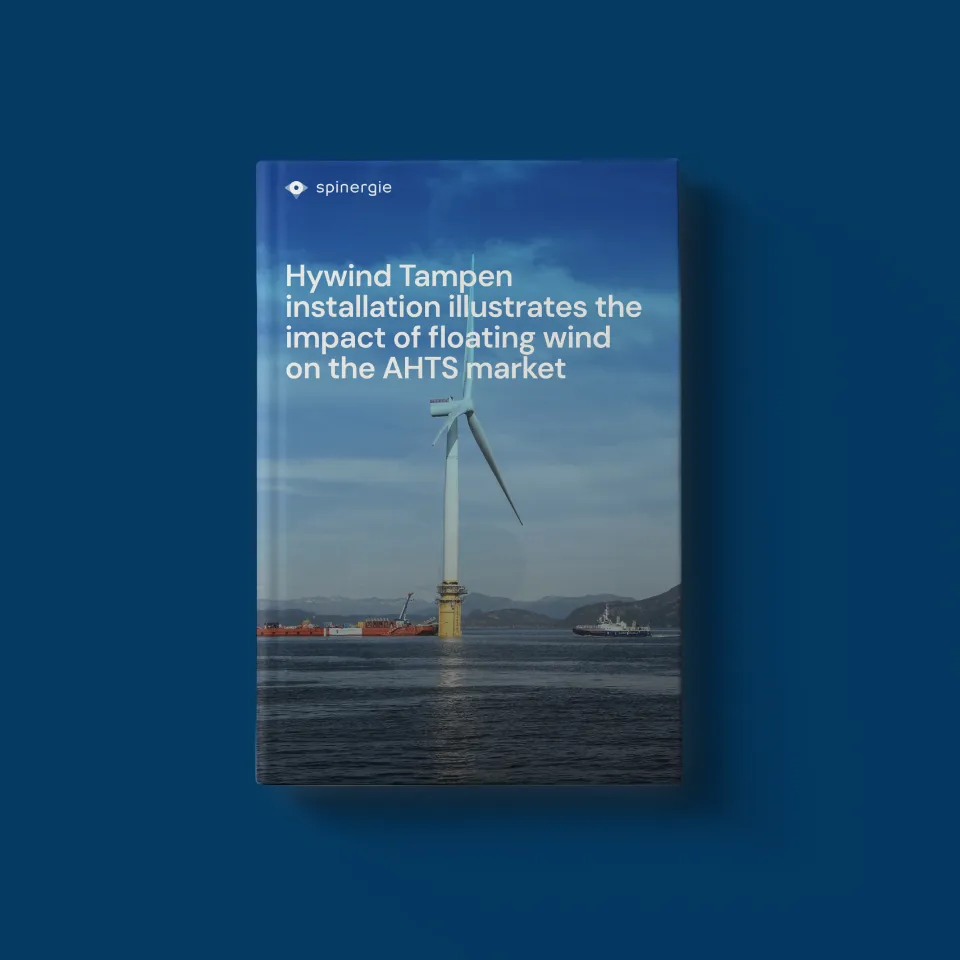Introduction
As floating wind scales up, so does demand for high bollard pull Anchor Handling Tug Supply (AHTS) vessels. From installation to O&M, vessel owners and offshore operators face rising logistical and market pressures. Understanding fleet utilization, day rates, and coordination challenges is now critical for staying competitive in a rapidly expanding offshore wind market.
What You'll Learn
- How AHTS vessels are deployed across floating wind operations—from anchoring and towing to turbine assembly and hook-up.
- The rising impact of floating wind projects on the global and European AHTS markets, including utilization trends, supply constraints, and day rate pressures.
- Insights from the Hywind Tampen project, showcasing vessel coordination, logistical planning, and efficiency gains in real-world floating wind installation.
- The future of floating wind demand, including how deeper waters, larger turbines, and O&M activities will intensify pressure on the offshore fleet.
- Strategies for OSV managers and vessel owners to adapt to this growing market, optimize operations, and secure their position as demand rises.
Read the full white paper to understand the evolving AHTS market, uncover operational insights from Hywind Tampen, and learn strategies to optimize fleet management, reduce costs, and prepare for increased floating wind operations.





